
La Earthcache / The Earthcache
La Cathédrale Saint Pierre de Beauvais présente pour sa construction différentes roches régionales (quart Nord-Ouest de la France) permettant d'en faire une étude comparée.
► Les Roches "Roussards"
Les Roches "Roussards" sont des formations sédimentaires détritiques caractéristiques du nord des Pays de Loire (Sarthe).
Leur nature lithologique dépend de la taille des sédiments (classification granulométrique).
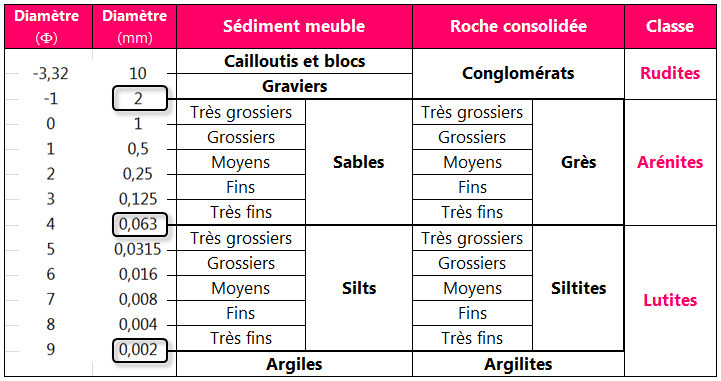
Une roche "Roussard" se distinguent des autres formations détritiques par son ciment ferrugineux.
Sous un climat chaud et humide, les eaux enrichies en silice et fer cimentent les clastes en une cuirasse ferrugineuse, donnant une matrice de couleur brun profond à rouille, très dure.
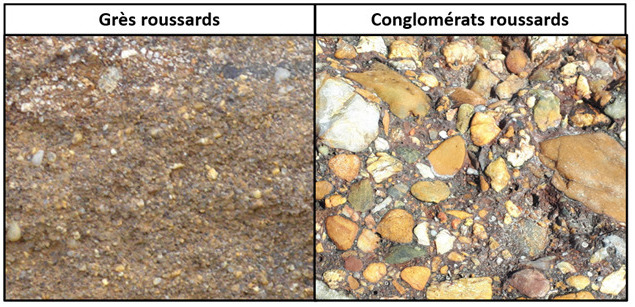
► La Craie Normande (Craie à silex du Sénonien)
A l'Ouest du Bassin Seine-Normandie, la craie à silex du Sénonien (surnommée "Craie Normande") est une roche blanche à gris claire, riches en CaCO3, friable (se raie avec l'ongle), pulvérulente, donnant des grains très fins (texture douce au toucher) laissant des traces blanches sur les doigts.
Dans cette formation crayeuse apparaissent des accidents siliceux, les silex, sous la forme de fines couches ou en rangées de nodules dispersés.
Le silex étant très riche en silice, cela donne une roche dure, impossible de rayer avec du métal, avec une cassure courbe et esquilleuse (dite cassure conchoïdale).
La coloration des silex dépend en premier lieu du milieu oxydant ou réducteur ou s'est faite la silicification (plus le silex est sombre, plus le milieu est réducteur).
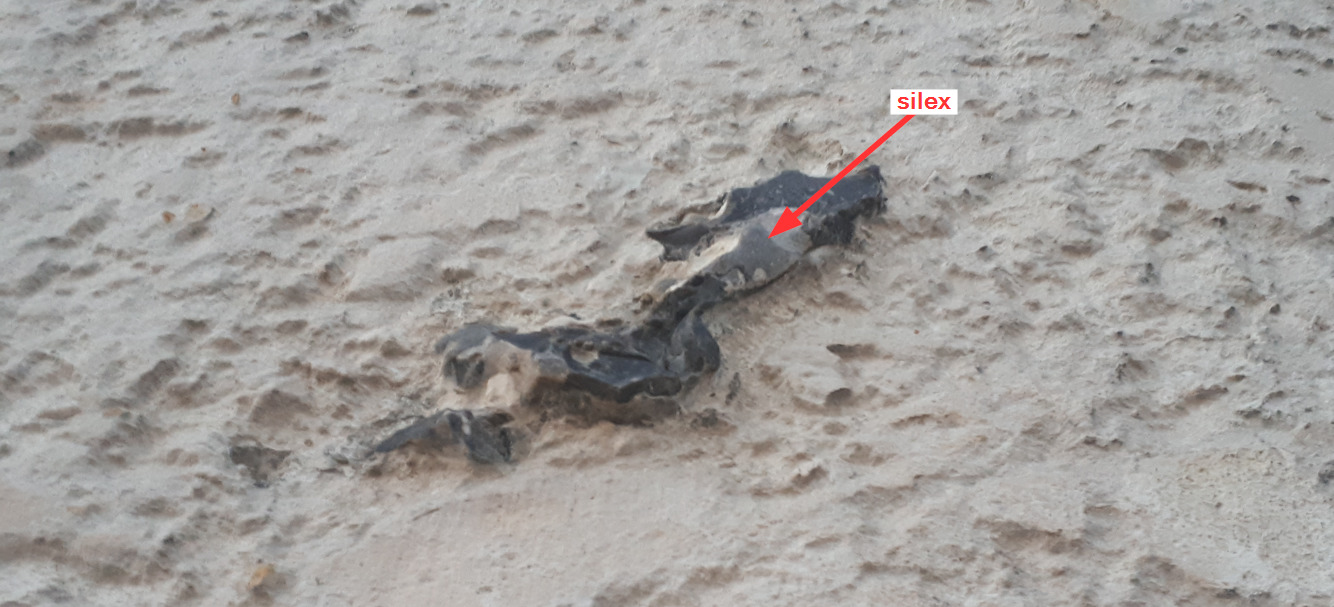
► Le Calcaire à Cérithes (Calcaire du Lutétien)
Cette roche est caractéristique du nord de Paris (Lutèce), d'où le nom de l'étage Lutétien.
Ce calcaire est une roche sédimentaire constituée à plus de 50 % de carbonate de calcium (CaCO3).Il s'est formé en milieu marin, par accumulation des débris de coquilles.
La roche est blanche, litée et à grains très fins.
C'est un calcaire biogénique riche en fossiles divers dont un grand nombre de cérithes.
Ce gastéropode allongé est un fossile stratigraphique, qui caractérise cette formation et sa datation.
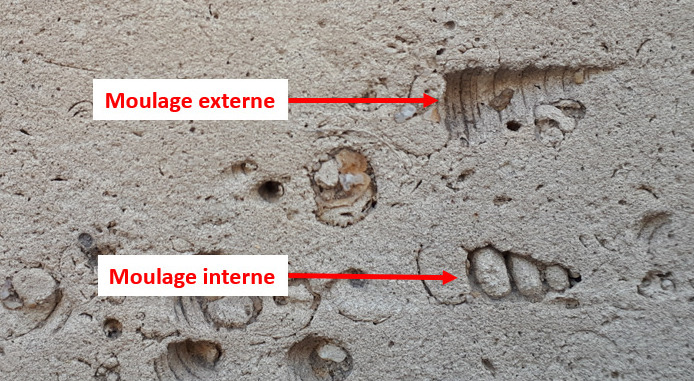
The church of Saint Hilaire de Blaru presents for its construction different rocks allowing to make a comparative study.
► The "Roussards"
Their lithological nature depends on the size of the sediments (grain size classification).
A "Roussard" rock is distinguished from other detrital formations by its ferruginous cement.
In a hot, humid climate, waters enriched with silica and iron cement the clasts into a ferruginous armor, resulting in a very hard, deep brown to rust colored matrix.
► Norman Chalk (Senonian flint chalk)
To the west of the Seine-Normandy Basin, the Senonian flint chalk (nicknamed "Norman Chalk") is a white to light gray rock, rich in CaCO3, friable (scratches with the fingernail), powdery, giving grains very fine (texture soft to the touch) leaving white marks on the fingers.
In this chalky formation appear siliceous accidents, the flints, in the form of thin layers or in rows of scattered nodules.
The flint being very rich in silica, this gives a hard rock, impossible to scratch with metal, with a curved and splintering break (known as conchoidal break).
The coloring of the flints depends firstly on the oxidizing or reducing medium where the silicification took place (the darker the flint, the more reducing the medium).
► Cérithes Limestone (Lutetian Limestone)
This rock is characteristic of the north of Paris (Lutèce), hence the name of the Lutetian floor.
This limestone is a sedimentary rock made up of more than 50% calcium carbonate (CaCO3) and a lower percentage of clay. It was formed in the marine environment, by the accumulation of shell debris.
The rock is white, layered and very fine grained.
It is a biogenic limestone rich in various fossils including a large number of ceriths.
This elongated gastropod is a stratigraphic fossil, which characterizes this formation and its dating
► Sources bibliographiques / Bibliographical sources
Les Questions / The Questions
Questions pour valider :"Les Roches de Saint Pierre de Beauvais"
Questions to validate: "The Rocks of Saint Pierre de Beauvais"
- Question 0 : Prenez une photo de vous ou d'un élément vous appartenant devant la cathédrale.
Cette photo devra au choix nous être transmise avec les réponses ou être ajoutée à votre log.
-Question 0 : Take a picture of yourself or something belonging to you in front of the cathedral.
This photo must either be sent to us with the answers or added to your log.
Vous allez passer devant 3 zones le long de la Cathédrale. Pour chacune, vous allez en déterminer la nature puis répondre à une des 3 questions ci-dessous :
- Si la roche est un Calcaire du Lutétien : identifiez la nature des fossiles et qualifiez les.
- Si la roche est une Craie Normande : en fonction de sa couleur, le milieu de formation du silex était il plutôt oxydant ou réducteur?
- Si la roche est un "Roussard" : en fonction de la taille des clastes, quelle est sa nature?
You will pass 3 areas along the Cathedral. For each, you will determine the nature and then answer one of the 3 questions below:
- If the rock is a Lutetian limestone: identify the nature of the fossils and qualify them.
- If the rock is a Norman Chalk: depending on its color, was the flint formation environment more oxidizing or reducing?
- If the rock is a "Roussard": according to the size of the clasts, what is its nature?
Point 1 : N 49° 25.957 E 002° 04.849'
Repérer la zone d'observation rouge A sur la photo WP1.
Locate the red observation area A on photo WP1.

- Question 1 : Décrivez la roche de la zone rouge A pour identifier sa nature puis allez voir la question associée ci-dessus.
- Question 1: Describe the rock in red zone A to identify its nature, then see the associated question above.
Point 2 : N 49° 25.940 E 002° 04.861'
Repérer la zone d'observation bleue B sur la photo WP2.
Locate the red observation blue B on photo WP2.

- Question 2 : Décrivez la roche de la zone bleue B pour identifier sa nature puis allez voir la question associée ci-dessus.
- Question 2: Describe the rock in blue zone B to identify its nature then see the associated question above.
Point 3 : N 49° 25.936 E 002° 04.873'
Repérer la zone d'observation verte C sur la photo WP3 (marches extérieures).
Locate the green observation area C on photo WP3.
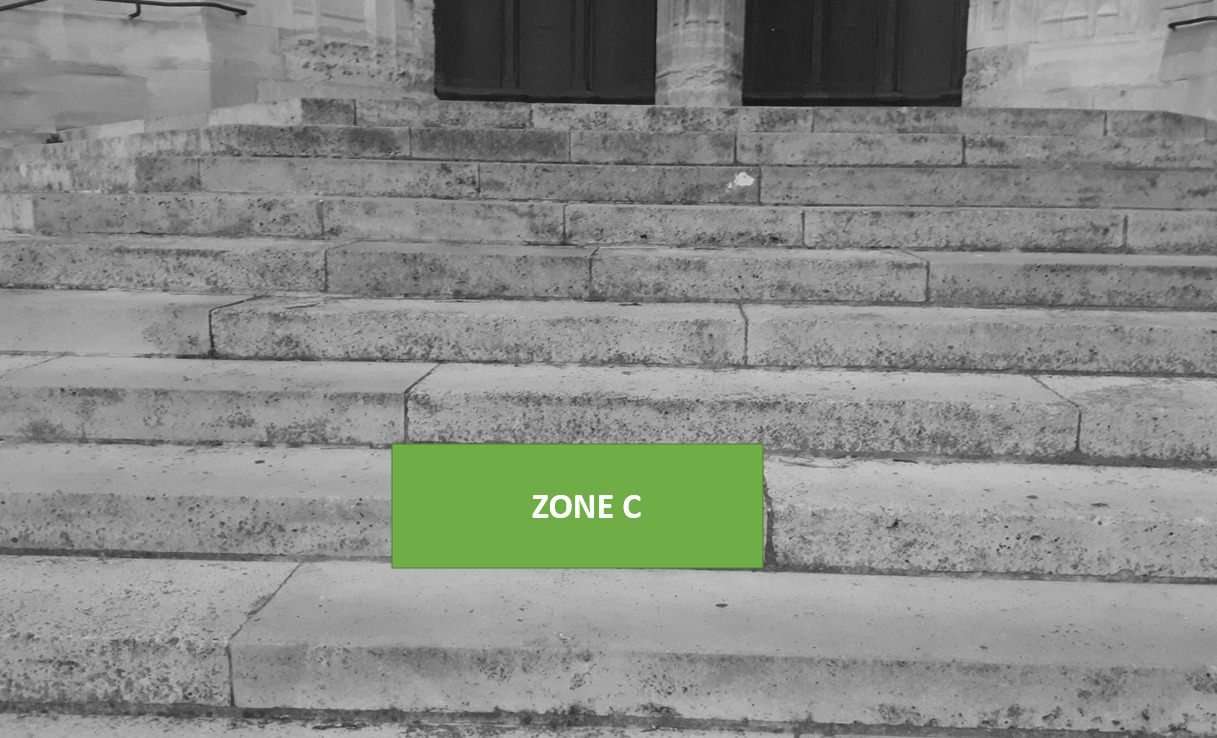
- Question 3 : Décrivez la roche de la zone verte C pour identifier sa nature puis allez voir la question associée ci-dessus.
- Question 3: Describe the rock in green zone C to identify its nature, then see the associated question above.
Vous pouvez vous loguer sans attendre notre confirmation,
mais vous devez nous envoyer les réponses en même temps soit par mail via notre profil (
fafahakkai), soit via la messagerie geocaching.com (Message Center).
S'il y a des problèmes avec vos réponses nous vous en ferons part.
Les logs enregistrés sans réponse seront supprimés.You can log this cache without waiting for our confirmation, but you must send us the answers at the same time, by e-mail via our profile (fafahakkai) or by the system of Message Center of geocaching.com.
If there is a problem with your answers we will notify you. The logs recorded without answers will be deleted.
Rappel concernant les « Earthcaches »: Il n'y a pas de conteneur à rechercher ni de logbook à renseigner. Il suffit de se rendre sur les lieux, de répondre aux questions ci-dessus et de nous renvoyer les réponses.
Reminder concerning "Earthcaches": there is neither a container to look for nor a logbook to sign. One need only go to the location, answer to the differents questions and send us the answers.